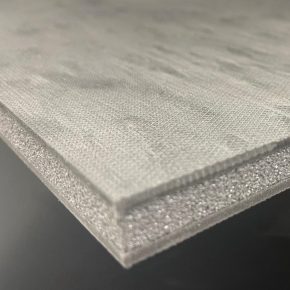
History of the Prefab: Quonset Huts
The old saying ‘the more things change, the more they stay the same’ could reasonably apply to Quonset huts.
Originally designed to cater to the logistical needs of World War II, the basic design lives on and is still a staple of prefabricated metal hut design. These days modern Quonset huts fulfill a multitude of uses including garages, aircraft hangers, bulk storage facilities, small business premises and even homes.
The evolution of Quonset huts:
The need for portable huts in wartime
When it was clear the US would be entering World War II then a key priority was logistics; how to effectively provide easy to put up and highly transportable storage and shelter for military personnel and supplies.
In the First World War, the British had pioneered the use of transportable structures with the Nissan hut; this acted as the inspiration for the US military.
Quonset huts created
The military went to George A. Fuller – a construction company in New York – with a request to build suitable structures within two months. The company obliged by setting up a production facility at Quonset Point, Rhode Island (hence the name of the huts) and started production.
The design
The huts had to be strong, durable and easy to assemble.
The semi-circular section design was settled on and achieved with a basic ‘skeleton’ of semi-circular ribs covered in corrugated sheet metal; the whole set on a steel frame foundation with a plywood floor.
The overall design was perfect for the use it was intended for; they were easy to put up and take down requiring only basic hand tools and no specialist knowledge, could be transported in easy to handle kit form and – because of their semi-circular cylindrical design – provided robust protection against even severe weather such as hurricanes and blizzards.
Due to the absence of support beams and uprights, there was plenty of space inside for maximum storage and accommodation of personnel.
These Quonset huts saw use in all sorts of military settings such as on airstrips and barracks, and in one example several were strung together to create a 54,000 square foot warehouse.
After the war
Some 170,000 Quonset huts were built during the war and lived on after the conflict ended in 1945.
Some were sold to civilians to create homes not unlike the prefab housing options becoming popular in the US, some universities turned them into student accommodation, and small businesses found Quonset huts an ideal low-cost way to set up shop. The Sacramento Peak observatory based itself in Quonset huts in 1948 and there was even a play written about them: ‘Tents of Tin’ by Robert Finton.
Enduring design
Far from being a relic of the war, the Quonset hut is arguably a design icon like the Jeep and it certainly still plays a key role in prefabricated structural design.
The basic effect of the original design allied to modern technology means they can still be transported and put up quickly and easily as per their original design remit, but 21st-century prefabricated structure techniques mean they can perform a myriad of functions as discussed earlier.
Latest news

30th April 2024
Geberit exhibiting at British Pig & Poultry Fair 2024
Bathroom and piping manufacturer Geberit will be exhibiting at the British Pig & Poultry Fair at NEC Birmingham (15 – 16 May 2024).
Posted in Articles, Building Industry Events, Building Industry News, Building Products & Structures, Building Services, Exhibitions and Conferences, Facility Management & Building Services, Innovations & New Products, Pipes, Pipes & Fittings, Plumbing, Retrofit & Renovation
29th April 2024
Hush: New Hushlay options offer acoustic upgrade potential
Leading UK acoustic systems manufacturer Hush Acoustics has introduced two additional variants of its Hushlay Soundmatting product.
Posted in Acoustics, Noise & Vibration Control, Articles, Building Industry News, Building Products & Structures, Building Services, Facility Management & Building Services, Floors, Innovations & New Products, Insulation, Restoration & Refurbishment, Retrofit & Renovation
29th April 2024
Digital Construction Week 2024 speaker programme announced
The programme at Digital Construction Week is carefully designed to help you keep up with the fast pace of innovation in the built environment.
Posted in Articles, Building Industry Events, Building Industry News, Building Products & Structures, Building Services, Exhibitions and Conferences, Innovations & New Products, news, Posts, Restoration & Refurbishment, Retrofit & Renovation, Seminars, Sustainability & Energy Efficiency
29th April 2024
Steel Window Association - for the specialists in domestic and commercial refurbishment of steel windows
The UK-wide Steel Window Association members are the established, proven experts in the renovation and sympathetic refurbishment of steel windows and doors in both domestic and commercial premises.
Posted in Architectural Ironmongery, Articles, Building Associations & Institutes, Building Industry News, Building Products & Structures, Building Systems, Doors, Glass, Glazing, Restoration & Refurbishment, Retrofit & Renovation, Steel and Structural Frames, Windows
 Sign up:
Sign up: